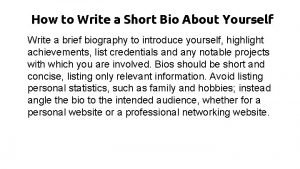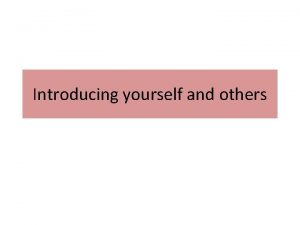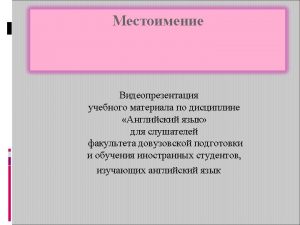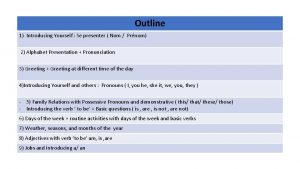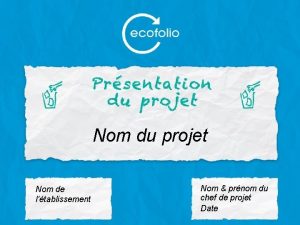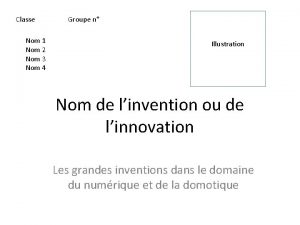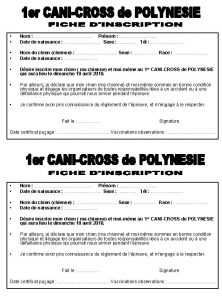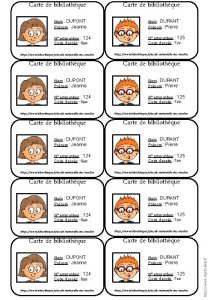Outline 1 Introducing Yourself Se presenter Nom Prnom








- Slides: 8

Outline 1) Introducing Yourself : Se presenter ( Nom / Prénom) 2) Alphabet Presentation + Pronunciation 3) Greeting + Greeting at different time of the day 4)Introducing Yourself and others : Pronouns ( I, you he, she it, we, you, they ) - 5) Family Relations with Possessive Pronouns and demonstrative ( this/ that/ these/ those) - Introducing the verb ’ to be’ + Basic questions ( is , are , is not , are not) 6) Days of the week + routine activities with days of the week and basic verbs 7) Weather, seasons, and months of the year 8) Adjectives with verb ‘to be’ am, is , are 9) Jobs and introducing a/ an

10) Introducing Numbers from 1 -100 11) Introducing “ Telling the time” 12) Time Expressions 13) Introduce Ordinal Number ( 1 st, 2 nd, 3 th …) 14) Dates and Birthdays: When is your birthday? 15) Days/ Months/ Years 16 ) Adjectives and Colors 17) Animals 18) Fruits and Vegetables 19) Clothes 20) Feelings and Emotions ( cold, happy, sad, tired…) 21) Parts of the body 22) Asking for direction ( up, down, left, right. . )

Lesson 1: Introduction Comment se presenter • • My Name is Yasmine Chabli Question What is your name? Answer: My name is …. . My First name is Yasmine Your first Name is …… My Last name is Chabli Your Last name is ……

Pronoms Personnels Sujets • I : je Example: I am fine, thank you. ( je vais bien merci) • You : tu Example: How are You? ( comment vas-tu? ) • He : il Example: He likes Chocolate ( Il aime le chocolat) • She : elle Example: she is Rose ( elle s’appelle Rose ) • It : il ou elle, pour les objets ou "ça", • We : nous, Ex: We are going to France ( Nous partons en France) • You : vous (plusieurs personnes), Example: Are you going to class together? Vous partez en classe ensemble? • They : ils, elles. Ex: They are happy. ( Ils sont heureux)

Possessive Adjectives : Masculin My Féminin Pluriel Mon Ma Example: My Brother Example : My Mother ( Mon Frère) (Ma mère) Mes Example: My parents (Mes parents) Your Ton Example: Your Child (Ton Enfant) Ta Example: Your sister ( Ta soeur) Tes Example: Your children (Tes Enfants) His Her Its Son Example : His Nephew (son neveu à lui) Her Nephew( son neveu à elle ) - Its Eye ( Son oeil au chat) Sa Example : His Niece( sa nièce à lui) -Her niece (sa niece à elle) - Its color (sa couleur à la voiture) Ses Example : His Children ( Ses enfants à lui) -Her Parents (ses parents à elle) -Its Eyes (ses Yeux au chat) Notre Example: Our Grand father ( Notre grand-père) Votre Example: Your Brother ( votre Frère à vous deux) Leur Example: Their Nephew ( Leur Notre Example : Our grand mother (Notre Grand-mére) Votre Example: Your sister (votre soeur à vous eux) Leur Example: Their Niece ( Leur Nos Example: Our Children (Nos enfants) Vos Example: Your Children ( vos enfants) Leurs Example: Their Children ( Our Your Their

This- That-These-Those • 'this' est utilisé pour un objet/une chose/une personne qui est près de l'énonciateur (celui qui parle) • Exemple : This book is the best book on Earth. • This is My Father. Ce livre est le meilleur livre du monde (l'énonciateur le tient dans sa main et il le montre). • • > Pluriel : 'these' • Exemple : These books are the best books on Earth. Ces livres sont les meilleurs livres du monde. - These are Your children.

• 'that' est utilisé pour un objet/une chose/une personne qui est LOIN de l'énonciateur (celui qui parle) • Exemple : That car over there is mine. Cette voiture, là-bas, est la mienne (il la pointe du doigt). • • > Pluriel : those • Exemple : Those cars over there are ours. Ces voitures, là-bas, sont les nôtres.

Introducing Verb ‘to be’ • I am : Je Suis • You are : Tu es • He is: Il est • She is: Elle est • It is: Il/Elle ( objet) est • We are : Nous sommes • You are : Vous êtes • They are: Ils Sont

